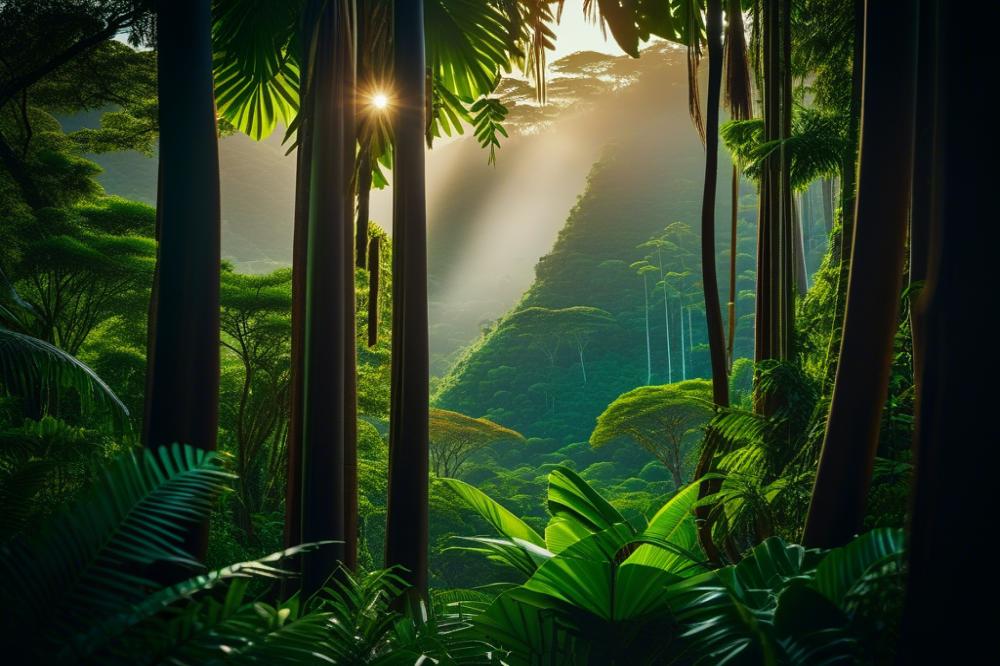Exploring Madagascar’s Unique Rainforests
Madagascar’s rainforests serve as a remarkable holiday destination in Africa. Visitors are drawn to this exotic locale not only for its stunning landscapes but also for its incredible range of wildlife. The rainforests play a crucial role in supporting biodiversity, hosting a range of species found nowhere else on Earth. While exploring these lush forests, travelers can witness unique flora and fauna thriving in their natural habitats.
Every journey into these vibrant ecosystems offers an opportunity for ecotourism. Many tourists are eager to experience the natural beauty while also contributing to conservation efforts. The rainforests are home to a plethora of endemic species, including the famous lemurs. These charming creatures are among the most recognizable animals of Madagascar and serve as ambassadors for the island’s wildlife.
Unfortunately, many species face threats due to habitat loss and various environmental pressures. This situation makes visiting such areas even more important. Tourists can play a part in conservation initiatives by choosing ethical tours that give back to the local communities and environments. With a tropical climate that supports the growth of diverse plant life, Madagascar offers a unique adventure for anyone who values nature.
Engaging with Madagascar’s rainforests means supporting vital ecosystems. Beyond the beauty lies a complexity that reflects the delicate balance of nature. Whether observing rare birds, colorful chameleons, or the distinct vegetation, every moment brings fresh insights into a world that is both hidden and enchanting. Embrace the chance to explore this rich biodiversity, while also making a positive impact.
Madagascar rainforests: An Overview
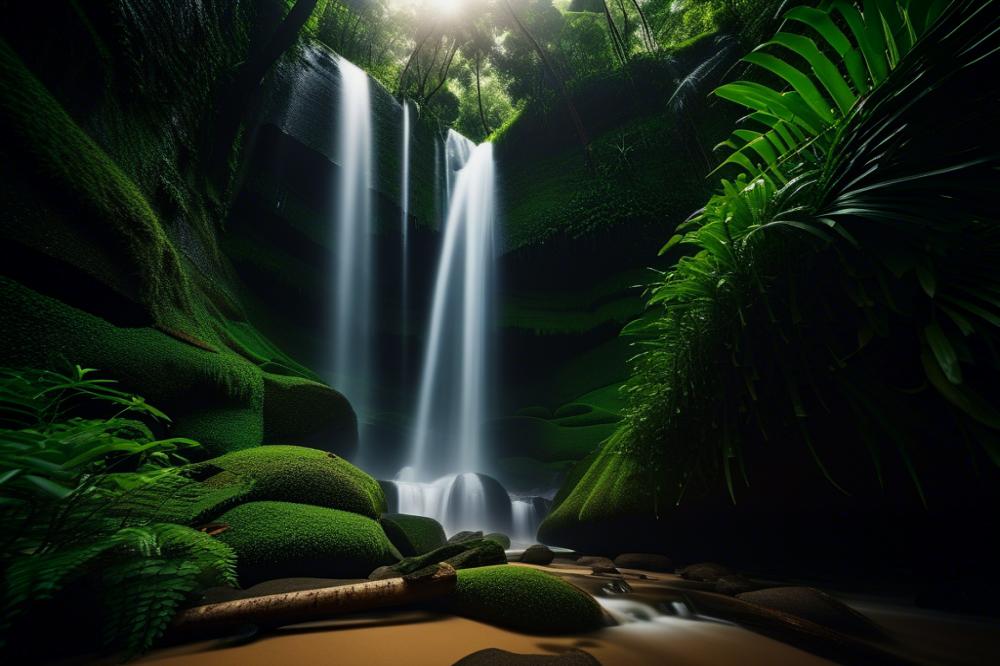
Madagascar boasts a tropical climate that is ideal for rainforest growth. The warm temperatures and abundant rainfall create a perfect environment for diverse life. Rainforest regions such as Andasibe-Mantadia and Ranomafana stand out as prime examples of this rich habitat. In these areas, towering trees and dense underbrush foster an intricate web of life.
Ecotourism has become a rising trend here. Tourists flock to see the incredible wildlife and plants. The rainforests are home to many endemic species that can only be found on this island. Remarkably, this includes several types of lemurs, which are a major attraction for visitors. Sadly, numerous species face threats and are classified as endangered.
The rainforest ecosystem is incredibly complex. Interdependence among organisms creates a balance that sustains life. For instance, unique flora provides food and shelter for countless animals. In return, the animals aid in pollination and seed dispersal. This cycle underscores the critical role each species plays in maintaining their habitat.
Conservation efforts are vital to protect these rainforests. Deforestation and climate change pose significant risks to this biodiversity. By preserving these areas, we safeguard not only the animals but also the rich plant life. Protecting Madagascar’s rainforests benefits both the environment and local communities.
Visitors to Madagascar have the opportunity to experience this extraordinary world. A trip to the rainforest can lead to encounters with vibrant birds and fascinating reptiles. Such interactions highlight the unique character of Madagascar’s natural environment. Understanding these ecosystems can foster a deeper appreciation for biodiversity.
Unique Flora of Madagascar
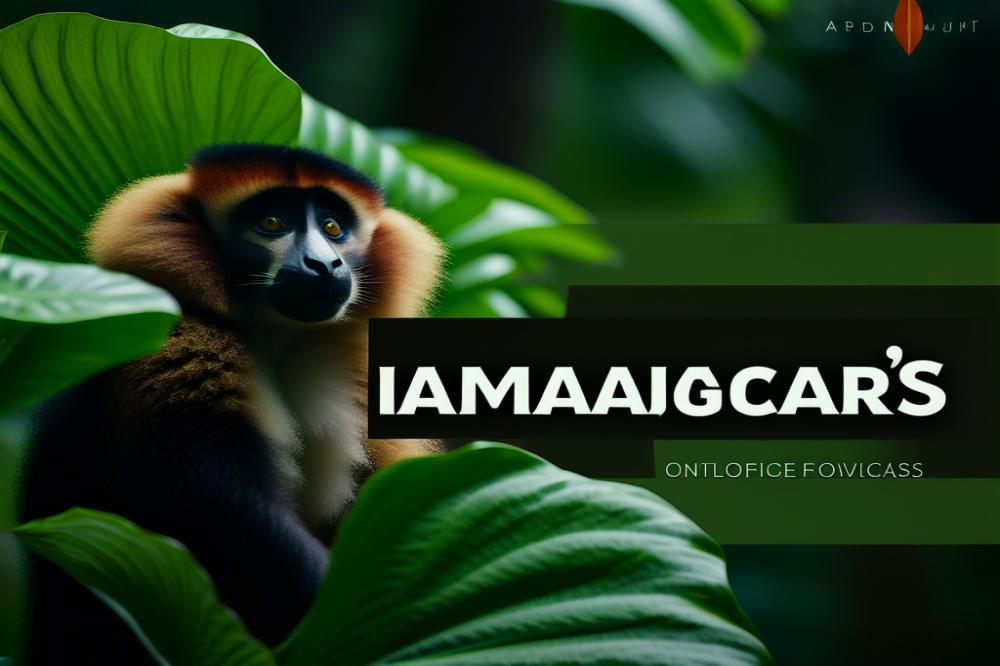
Madagascar is home to some of the most fascinating plant life on the planet. The rainforests boast many endemic species, meaning they can only be found in this specific region. Remarkably, about 90% of all plant species on the island are found nowhere else. This fact highlights the special nature of the flora in this tropical habitat.
One of the most iconic plants is the baobab tree. With its massive trunk, this tree looks like it’s upside down. Baobabs can store large amounts of water, allowing them to survive dry spells. These trees have become vital to the local culture. They serve as symbols of strength and resilience, often appearing in folklore.
Another notable plant is the lemur tree, also known as the traveler’s tree. Its leaves can hold water, providing a crucial source of hydration to wildlife. This feature is especially important for lemurs, which rely on various plants for food. The rainforest ecosystem thrives because of the interdependence between these extraordinary trees and the animals that inhabit the area.
The conservation of Madagascar’s unique flora is critical. Many plant species are endangered due to deforestation and climate change. Efforts in conservation aim to protect these species and their habitats. Such endeavors are not only about saving plants; they also help preserve the rich biodiversity of the island. Ecotourism serves as a significant avenue for raising awareness and funds for these efforts. Tourists drawn to Madagascar’s rainforests contribute to local economies while also supporting environmental initiatives.
It is important to recognize the role of flora in the ecosystem. Plants not only provide oxygen but also serve as homes for countless species. Their existence supports the various layers of the rainforest, from the towering canopies to the rich forest floor. Each plant plays a part in the survival of many endangered species found here.
Cultural significance also accompanies the unique flora of Madagascar. Local communities use many plants for medicine and food. Roots, leaves, and flowers often feature in traditional customs and rituals. This deep connection to the plant life highlights the importance of maintaining a healthy environment. Cultural practices can inspire conservation efforts, reminding everyone of the intricate relationship between nature and human life.
Thus, Madagascar’s endemic species reflect a remarkable interplay of life. These plants are integral to the local ecosystem and culture, making their preservation crucial. Continued efforts in conservation and ecotourism support not only the flora but also the unique fauna that call these rainforests home.
Unique Fauna: The Lemurs and More
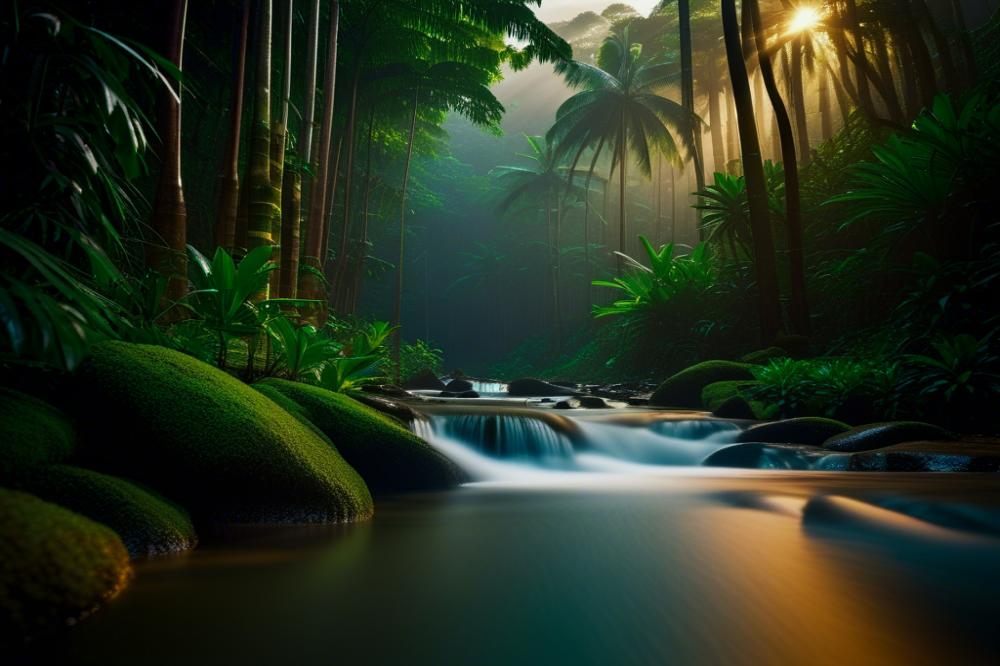
Madagascar is famous for its amazing wildlife, especially its lemurs. These primates are often seen as the symbol of Madagascar’s incredible fauna. Over 100 species of lemurs roam the island, each adapted to the rainforest ecosystem. Many are small and live in trees, while others, like the Indri, are larger and have a distinctive call that echoes through the forests. Their big eyes and playful nature make them incredibly fascinating to observe.
Besides lemurs, the island hosts a variety of reptiles, birds, and insects that are found nowhere else on Earth. The chameleons of Madagascar showcase vibrant colors and unique adaptations, making them a marvel for many nature enthusiasts. Birds such as the Madagascar fish eagle soar in its skies, showcasing the true biodiversity of the location. Insects, like the Madagascar hissing cockroach, play crucial roles in the habitat, contributing to the ecological balance.
Endangered species need our protection. Many of these animals face threats due to deforestation and habitat loss. Conservation efforts are critical in maintaining their populations. Supporting ecotourism initiatives can help fund these efforts while providing locals with an economic incentive to preserve their natural environment. Understanding the importance of these species allows us to appreciate their role in the tropical climate of Madagascar.
Every time we learn more about these endemic species, we uncover how interconnected we are with them. The health of the rainforest ecosystem relies on the survival of lemurs and other wildlife. A decline in their numbers can create a ripple effect, harming other plants and animals. Protecting their habitat is vital, not just for the fauna, but for the overall health of the planet.
Conservation Challenges and Efforts
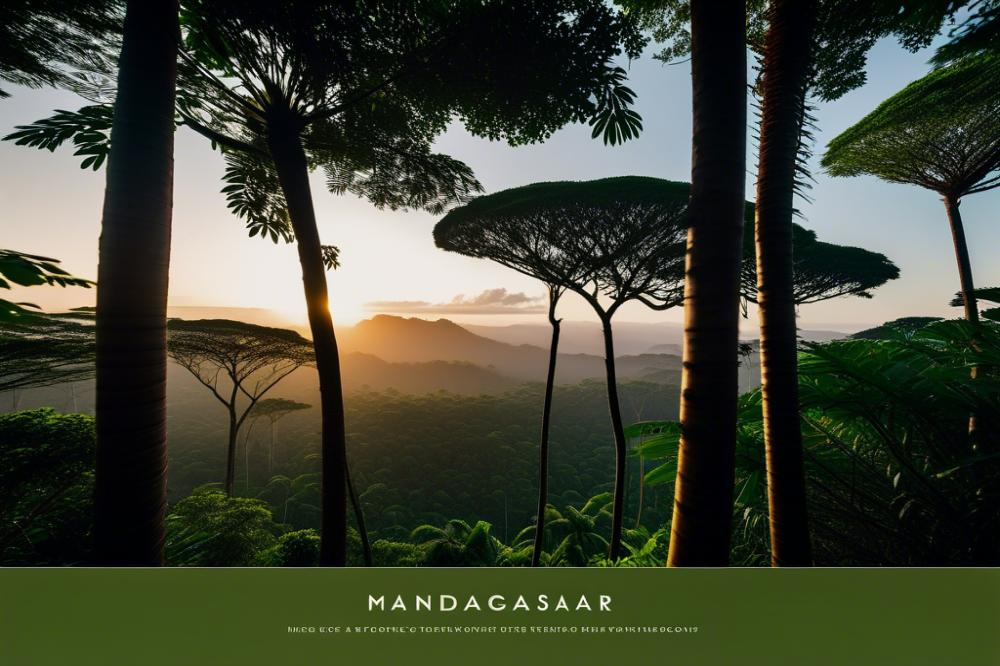
Madagascar’s rainforests face significant threats, primarily due to deforestation. Forest clearance occurs for agriculture, logging, and infrastructure development. This has dire consequences for the habitat of many species. The tropical climate exacerbates these challenges. With rising temperatures and shifting weather patterns, entire ecosystems are at risk.
Climate change impacts rainfall patterns, which can alter the delicate balance of the rainforest ecosystem. Many plants and animals cannot adapt quickly to these rapid changes. Endangered species, including various lemurs and reptiles, may face extinction if conditions don’t improve. Unique flora and fauna, found nowhere else on Earth, depend on these forests for survival.
Conservation efforts are critical to mitigate these threats. Nonprofit organizations, along with governmental bodies, work together to protect biodiversity. Initiatives focus on creating protected areas and promoting sustainable land use. Educating local communities is a fundamental aspect of these strategies. Everyone needs to understand the importance of preserving their environment.
Incorporating ecotourism is another solution. By attracting visitors who respect and cherish nature, communities can benefit economically while helping conservation. This approach allows for the creation of jobs focused on protecting habitats rather than destroying them. It also fosters appreciation for the endemic species that many tourists come to see.
Local communities play a crucial role in conservation strategies. Their traditional knowledge and skills can effectively manage natural resources. Engaging them ensures that conservation efforts are culturally appropriate and sustainable. It builds a sense of ownership and responsibility towards the environment. By empowering locals, we can create a strong network dedicated to preserving these irreplaceable rainforests.
The journey toward a sustainable future for Madagascar’s rainforests is challenging. Yet with cooperative efforts, there is hope. Protecting unique species and their habitats demands our collective action. Understanding and supporting these initiatives is vital for maintaining the beauty and diversity of Madagascar’s natural world.
Ecotourism in Madagascar’s Rainforests
Madagascar’s rainforests offer amazing opportunities for ecotourism. Adventure seekers can explore an incredible range of biodiversity. Tourists can encounter lemurs, numerous endemic species, and captivating plants. Since these rainforests are home to endangered species, it becomes crucial to promote sustainable travel practices. Choosing ecotourism benefits the environment and supports local communities.
Local economies thrive when travelers visit. Jobs are created in guiding, hospitality, and transportation. Local people earn an income while sharing their knowledge of the rainforest ecosystem. This creates a symbiotic relationship between tourists and locals. By purchasing crafts or food, visitors help stimulate economic growth. This process contributes positively to conservation efforts.
Responsible travel is key when visiting. Follow guidelines provided by tour operators and park services. Leave no trace when exploring. Do not disturb wildlife or their habitats. Respect the local culture and traditions. Engaging with communities in a respectful manner fosters understanding and collaboration. Remember to choose eco-friendly accommodations. When possible, opt for lodges that practice sustainability.
Visitors should also be mindful of their transportation choices. Walking and biking allow for closer interaction with nature. This way, travelers not only enjoy the scenic beauty but also reduce their carbon footprint. Embracing this approach makes the experience memorable while protecting the precious rainforest.
With a tropical climate, the beauty of these forests can be enjoyed year-round. Each season reveals something new, from blooming flowers to active wildlife. Make sure to pack essential items for your journey. These include proper clothing, insect repellent, and enough water.
Sharing experiences through social media can raise awareness of Madagascar’s unique flora and fauna. It helps spread the word about the importance of conservation. By highlighting this natural treasure, travelers can inspire others to support ecotourism and protection efforts. The rainforests hold immense ecological value and deserve our respect. Engaging in responsible tourism contributes to their survival for generations to come.
Final Thoughts on Madagascar’s Rainforests
Madagascar’s rainforests stand as a beacon of biodiversity. Home to unique flora and diverse wildlife, these ecosystems play a crucial role in the health of our planet. Travelers seeking adventure and education will find an incredible realm to explore. Every hike through these vibrant forests unveils new wonders, from colorful plants to rare animals, many of which cannot be found anywhere else in the world.
Tourism in Madagascar can be a double-edged sword. While it offers an opportunity for economic growth, it can also risk the very environments we aim to cherish. Supporting conservation efforts is vital. Visitors should prioritize eco-friendly tours that contribute to local communities and help protect habitats. By choosing responsible travel options, adventurers play a part in ensuring the longevity of these fragile ecosystems.
In summary, embracing the beauty of Madagascar’s rainforests rewards both the explorer and the environment. Seeing the unique fauna in its natural habitat is an experience like no other. Encouragement to visit comes not just from the allure of nature, but also from the chance to make a positive impact. Sustainable adventures await those ready to discover this extraordinary island.
So, pack your bags and prepare for an unforgettable journey. The rainforests of Madagascar are calling, and they need your support to thrive.

